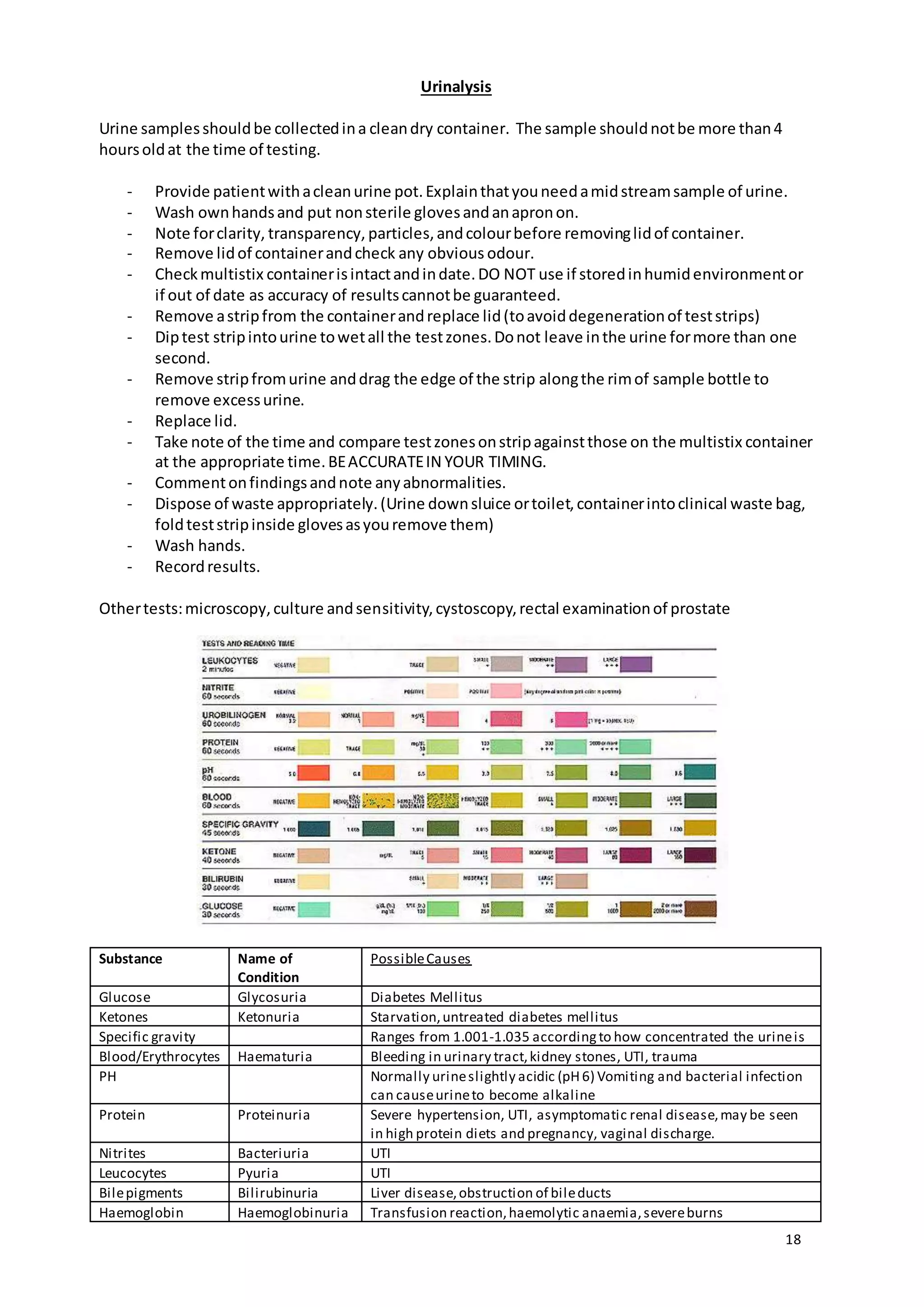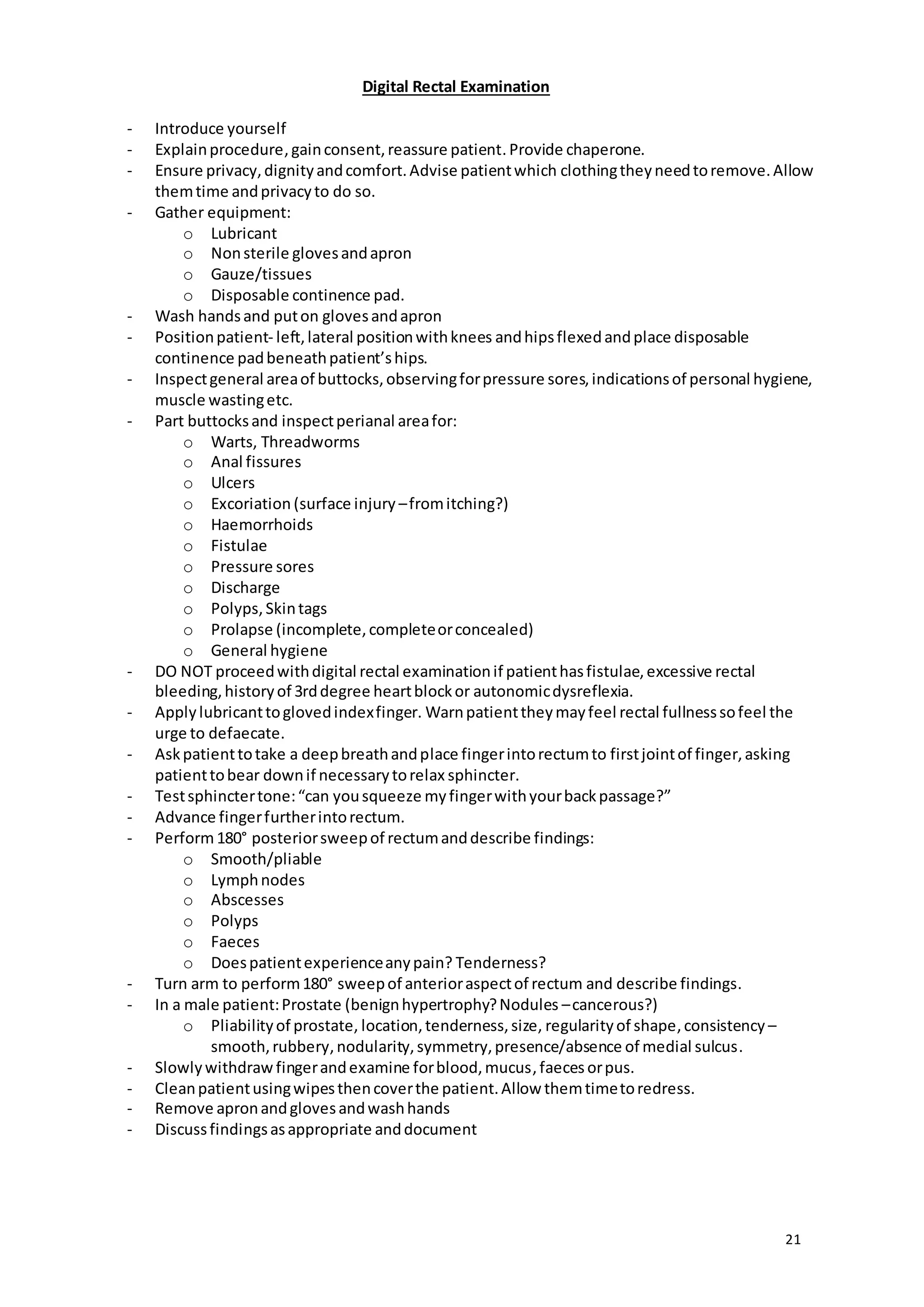The document is a clinical skills guide that was created by the author for a competition. It contains instructions for over 20 different clinical skills including hand washing, taking vital signs, blood pressure measurement, various types of injections, and other procedures. The guide provides step-by-step explanations of how to properly perform each skill for assessment in the competition.































